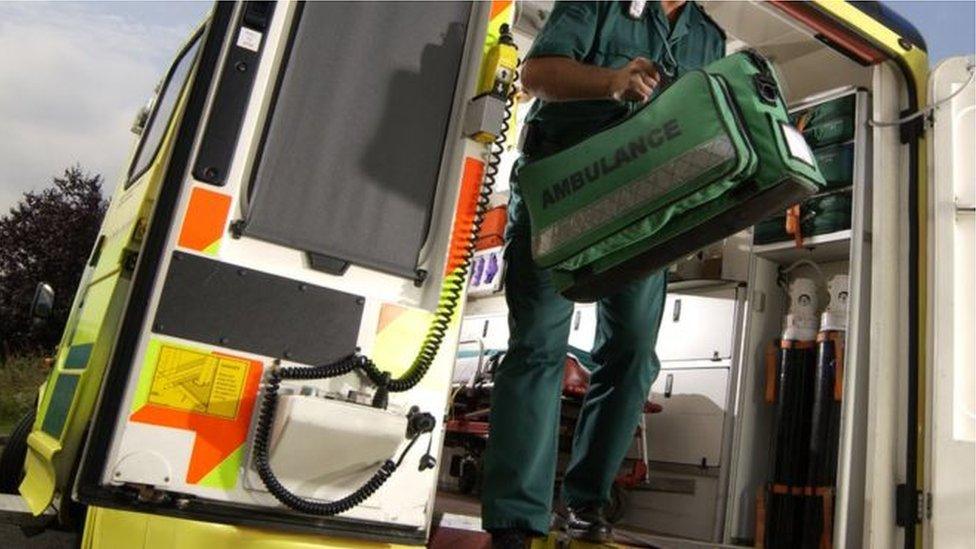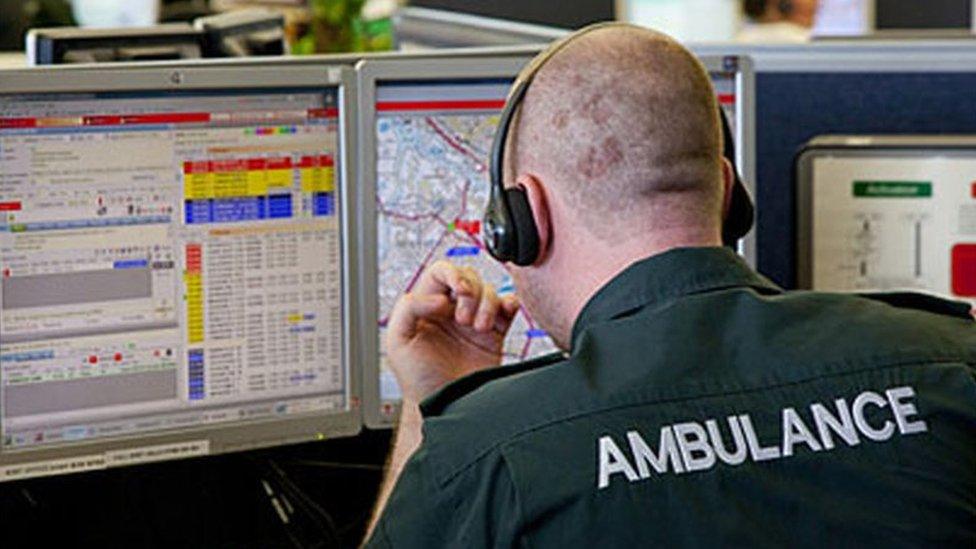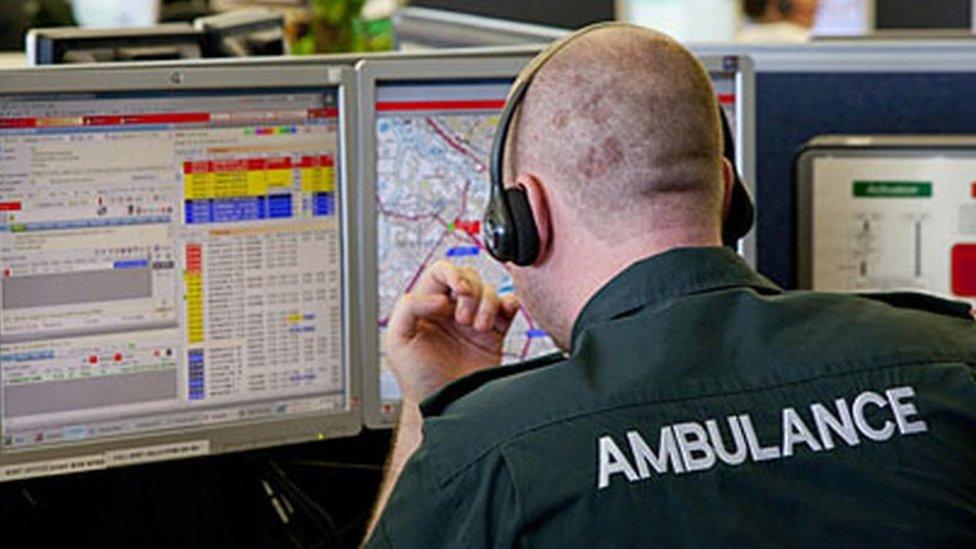Thousands of ambulances dispatched with single crew
- Published
- comments

More than 10,000 ambulances have been dispatched with one crew member on board in the past four years.
The Scottish government has previously said single crewing should only occur in "exceptional circumstances".
Paramedics were sent on their own to 2,204 emergency call-outs in 2016/17, according to figures obtained by the Scottish Conservatives.
The Scottish Ambulance Service blamed staff absences and said the figure represented just 1.5% of shifts.
Since 2013/14, a total of 10,029 single-crewed ambulances have been dispatched
The rate has fallen from a high of 3,514 in 2015/16 but remains above the 2013/14 low of 1,644.

Single crew ambulance deployment is meant to take place only in "exceptional circumstances"
First Minister Nicola Sturgeon warned against single-crew call-outs while she was health secretary a decade ago.
She said at the time: "I have made it clear to the Scottish Ambulance Service that it must take action to eliminate rostered single-manning.
"The policy of the Scottish government is clear - traditional accident and emergency ambulances should be double-crewed, with at least one member being a paramedic, unless in exceptional circumstances."
The Scottish Conservatives said the continued level of single-crewed ambulance use was "unacceptable".
Health spokeswoman Annie Wells said: "Everyone accepts that in the emergency services there will always be times where rules have to be bent and people need to adapt to developing situations.
"But for single crews to be sent out on 10,000 occasions in four years - when the specific policy is not to do that - is unacceptable.
"The SNP government has to take responsibility for this. Nicola Sturgeon herself said she would end this practice nearly a decade ago but next to no progress has been made."
'Small proportion'
The Scottish government said the numbers remained "low" in comparison with the actual number of shifts across Scotland and that it was continuing to invest in staffing.
Health Secretary Shona Robison said paramedic numbers rose by 13.9% between September 2007 and June 2017, and overall staff numbers in the service were up 16.5% in the period.
Ms Robison added that 1,000 extra paramedics would be trained in the next four years.
She said: "This will help reduce pressure on A&E and to support primary care transition, and we will continue to work closely with them to reduce single crewing across Scotland."
The Scottish Ambulance Service insisted staff were not routinely rostered to work on their own, but that single crewing sometimes arose because of short notice, unplanned staff absences.
A spokesperson added: "The statistics being quoted need to be seen within the wider context of over 670,000 shifts across this period, meaning only 1.5% of these were single-crewed.
"We continue to recruit and train staff across the service to ensure we provide a high level of patient care at all times."
- Published1 January 2018

- Published17 November 2017
